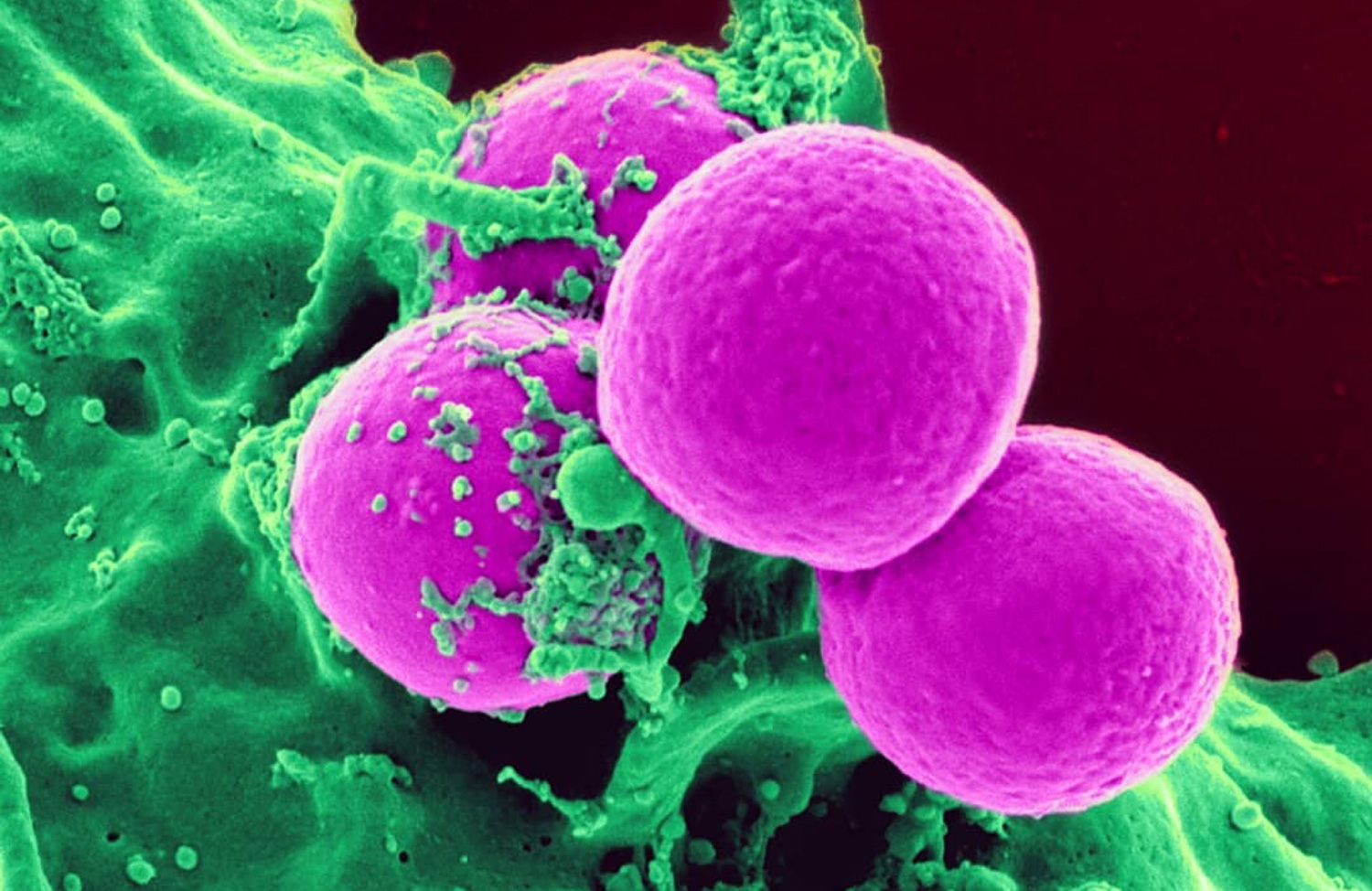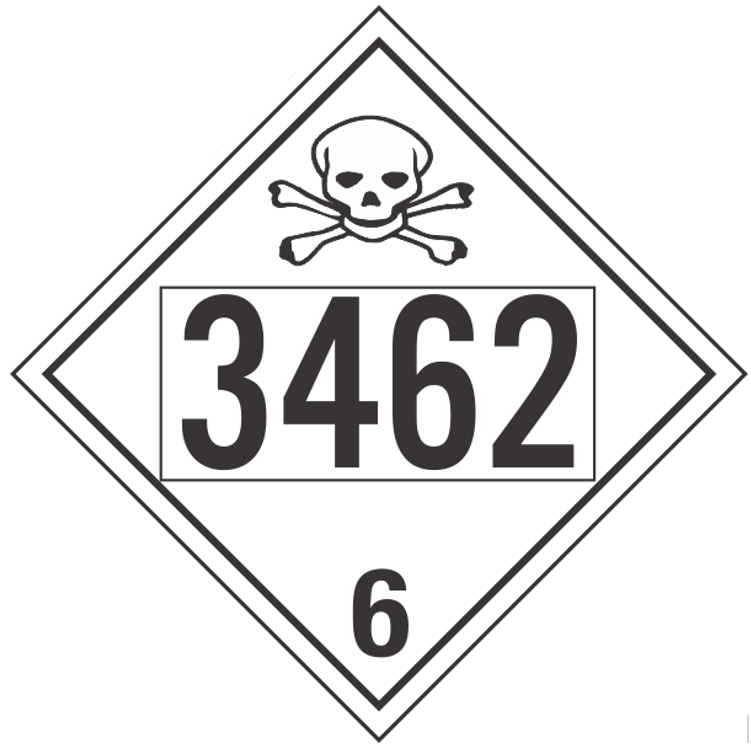SEB (Staphylococcal Enterotoxin B) – PG
Staphylococcal enterotoxin B (SEB) is the toxin most often associated with food poisoning. This toxin is one several harmful substances that bacterium Stabhylococcus aureus produces that are commonly related to food poisoning. The bacterium grows in unrefrigerated meats, dairy and bakery products. Some countries have been producing SEB as a biological weapon.
SEB Biological Agent Description
The bacterium Staphylococcal enterotoxin B (SEB) is categorized under category B select agent, as it is highly potent enterotoxin and very small quantities are required to exert its toxic effect compared to a synthetic chemical. SEB is extremely stable and can easily produced in large quantities. At low centration it can cause multi-organ system failure and death. After SEB enters the body, it causes harm for the immunity system. SEB incapacitates 50% of the exposed people of dose of 0,0004μg/kg of body weight and 50% lethal dose being 0,02μg/kg of body weight for human exposed by inhalation route. SEB is not contagious and cannot be transmitted from person-to-person.

Staphylococcus aureus colony. Staphylococcal enterotoxin B (SEB) is a common cause of food poisoning, with severe diarrhea, nausea and intestinal cramping often starting within a few hours of ingestion. The toxin is quite stable and may remain active even after the contaminating bacteria are killed. It can withstand boiling at 100 °C for a few minutes.
Like all toxins, SEB is normally found in nature. There is very little information on how or where SEB occurs in nature. Some infections have been found in rodents, sheep and cattle.
SEB Historical Background
Staphylococci was first discovered by German surgeon Theodor Billroth in 1874 in pus (rot) sample. In the year of 1878 German microbiologist Robert Koch isolated the bacteria and French chemist and microbiologist Lois Pasteur was the first to breed them in liquid culture in 1880.
Staphylococcal enterotoxins are a group of molecules which have drawn immunity researchers’ attention over many decades. The first SE discovered in 1966 was SEA, which followed by another eight B to E and G to J.
Staphylococcal enterotoxin A belongs to the family of staphylococcal enterotoxins, a group of molecules which have drawn the attention of researchers in the field of immunity for over 30 years. The first SE discovered was SEA, in 1966, followed by another eight (B-E, G-J)
SEB Usage
SEB was studied and it has been part of the biological weapon program of many countries because it can be easily aerosolised and its very stable. However, it is classified as an incapacitating agent, because in most cases aerosol exposure does not result in death, but temporary incapacitating illness that lasts as long as two weeks.
During the 1960’s, U.S. had an offensive biological warfare program where SEB was studied as a biological weapon and stockpiled before the closing of the Biological weapons convention in 1972. The U.S. re-establish research programs for vaccine and therapeutic development against biological weapons after the suspicion arose that the U.S.S.R. was continuing the stockpiling and testing of biological weapons.
It has not been confirmed that SEB was used in any act of bioterrorism.
SEB Transmission & Dispersion
SEB can enter into the human body by inhalation and ingestion. The most typical is to get SEB via contaminated food or water. SEB is one of the most common toxins related in toxin-mediated food-borne disease. Heating the contaminated food only kills the bacteria but does not destroy the heat-stable SEB toxin. There are not many SEB food poisoning cases, because it can be misunderstood as a “normal stomach-flu” and therefore not investigated properly.
In a biological attack, SEB could be dispersed in food, water or as an aerosol. Contaminating a food or water supply would be an excellent method to infect population. A small, localised attack would be more effective that a large-scale attack against a major food supply, such as a water reservoir.
SEB Exposure Symptomology
Symptoms of SEB exposure are similar to normal flu, like sudden onset of fever, chills, headache, sore throat and muscle pain.
- Ingested SEB typically manifests through common food poisoning symptoms, like nausea, vomiting, and diarrhea. Symptoms usually appear 4 to 10 hours later. Symptoms are normally resolve within 12-24 hours.
- Inhaled SEB symptoms include dry cough, shortness of breath, and chest pain. In severe cases, there may be build-up of fluid in the lungs. Symptoms most likely start within 1-6 hoursafter exposure. Symptom onset after inhaling SEB may vary from 3-12 hours. If the aerosolised SEB come into contact with eyes, there may be irritation, redness and facial swelling. From inhaled SEB 4 out 5 people get sick. Fever (39-41ºC) lasts 2 to 5 days and coughing may last up to 4 weeks. Symptoms associated exposure to SEB through respiratory route will indicate biological attack, because SEB won’t be naturally inhaled.
SEB Treatments
Exposed people usually have brief self-limited illness. The only available treatment is medical care with symptomatic support.
At the moment, despite extensive efforts, there is no therapy or vaccine approved for human use against SEB.
Response & Protection Actions Against SEB
SEB is not spread from person-to-person, standard protection and hospital hygienic protection for treating the patients are sufficient (gloves, face mask and hand disinfection).
After exposure to SEB, clothing, skin and eyes should washed properly with water and soap for at least 15 minutes. The water and soap are suitable because SEB is a highly-soluble protein. Contaminated material, equipment and surfaces can be decontaminated by using 0,5% Hypochloride solutions for 10 to 15 minutes. Contaminated food should be destroyed.
Did You Know?
The Staphylococcal name is derived from Greek term Staphyle (=grape) and refers to the grape-like arrangement in a microscopic preparation.
SEB CAS number is #11100-45-1

SEB has also UN 3462 number in category 6.1. for toxins extracted from solid living source and Not Otherwise Specified.
SEB Fact Box
| Agent type | Bacteria |
| Infectiousness | No |
| Person-to-Person | No |
| Incubation period | 4-10 h (ing) 1-6 h (inh) |
| Infectious dose (aerosol) | 0,02 µg/kg person body weigh |
| ENVI Assay Sensitivity | 13 ng/ml sample buffer |
| Lethality | Low |
| Therapy | No vaccine, no antibiotics |
ENVI Assay System
Bertin Environics’ ENVI Assay System bio defence tests is the ideal tool for provisional identification of Biological threats. These high quality and proven tests for early detection are the most compact immunoassay “lab-in-a-box” in the market.

Disposable, separate assays for seven highly poisonous hazardous agents: ricin toxin, botulinum toxin, Bacillus anthracis anthrax, orthopox virus, SEB, Yersinia pestis and Francisella tularensis.

Fortunately I have been experiencing the gastroenteric symptoms of nausea vomiting episodes gut pain and persistent diarrhoea. Also fever and chills and fatigue. I have had this over 24 hours and hopefully I can begin my recovery phase.
Dear Nino, it is unfortunate to hear that you have had to face the symptoms of poisoning caused by this substance. I hope you are already on the mend. Get well soon!